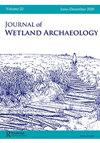Early Mesolithic Hunting and Fishing Activities in Central Russia: A Review of the Faunal and Artefactual Evidence from Wetland Sites
Q1 Arts and Humanities
引用次数: 15
Abstract
Abstract Fifteen peat bog settlements have been excavated in the area between the Volga and Oka Rivers in Central Russia over the last few decades. These wetland sites contained cultural layers with well-preserved organic materials from the beginning to the end of the Mesolithic. Faunal assemblages, hunting and fishing tools from the main early Mesolithic sites of the region are described in this article. The data from wetland sites indicates that the economic and cultural model of hunters-fishers-gatherers characteristic of the boreal forests zone was applicable in the Volga-Oka area by the very beginning of the Holocene, or probably earlier. The Mesolithic boreal-culture was perfectly adapted to the forest and lake environment and had gradually developed in the region during early Mesolithic and then over several millennia. This subsistence strategy proved to be flexible and sustainable. It is noted, however, that the natural environmental factors, which caused the emergence of this cultural and economic model in the Upper Volga area at the beginning of the Mesolithic, did not induce significant effects on its subsequent development.俄罗斯中部早中石器时代的狩猎和捕鱼活动:来自湿地遗址的动物和人工证据综述
在过去的几十年里,在俄罗斯中部伏尔加河和奥卡河之间的地区发现了15个泥炭沼泽定居点。这些湿地遗址包含了从中石器时代开始到结束保存完好的有机物质的文化层。本文描述了该地区主要中石器时代早期遗址的动物组合、狩猎和捕鱼工具。来自湿地遗址的数据表明,全新世初期或更早的伏尔加-奥卡地区就适用于北方森林地区特有的狩猎-渔业-采集者经济文化模式。中石器时代的北方文化完全适应了森林和湖泊环境,并在中石器时代早期和随后的几千年里逐渐发展起来。这种生存战略证明是灵活和可持续的。然而,值得注意的是,导致中石器时代初期伏尔加河上游地区出现这种文化和经济模式的自然环境因素,并没有对其随后的发展产生重大影响。
本文章由计算机程序翻译,如有差异,请以英文原文为准。
求助全文
约1分钟内获得全文
求助全文
来源期刊

Journal of Wetland Archaeology
Arts and Humanities-Archeology (arts and humanities)
CiteScore
1.40
自引率
0.00%
发文量
6
期刊介绍:
The Journal of Wetland Archaeology publishes a wide range of contributions in all fields of wetland archaeology. It includes scientific and methodological features, geoprospection, environmental reconstruction, wetland hydrology, cultural aspects of wetland archaeology, as well as conservation, site management, legislation, and site protection. All periods and all geographic regions are covered.
 求助内容:
求助内容: 应助结果提醒方式:
应助结果提醒方式:


